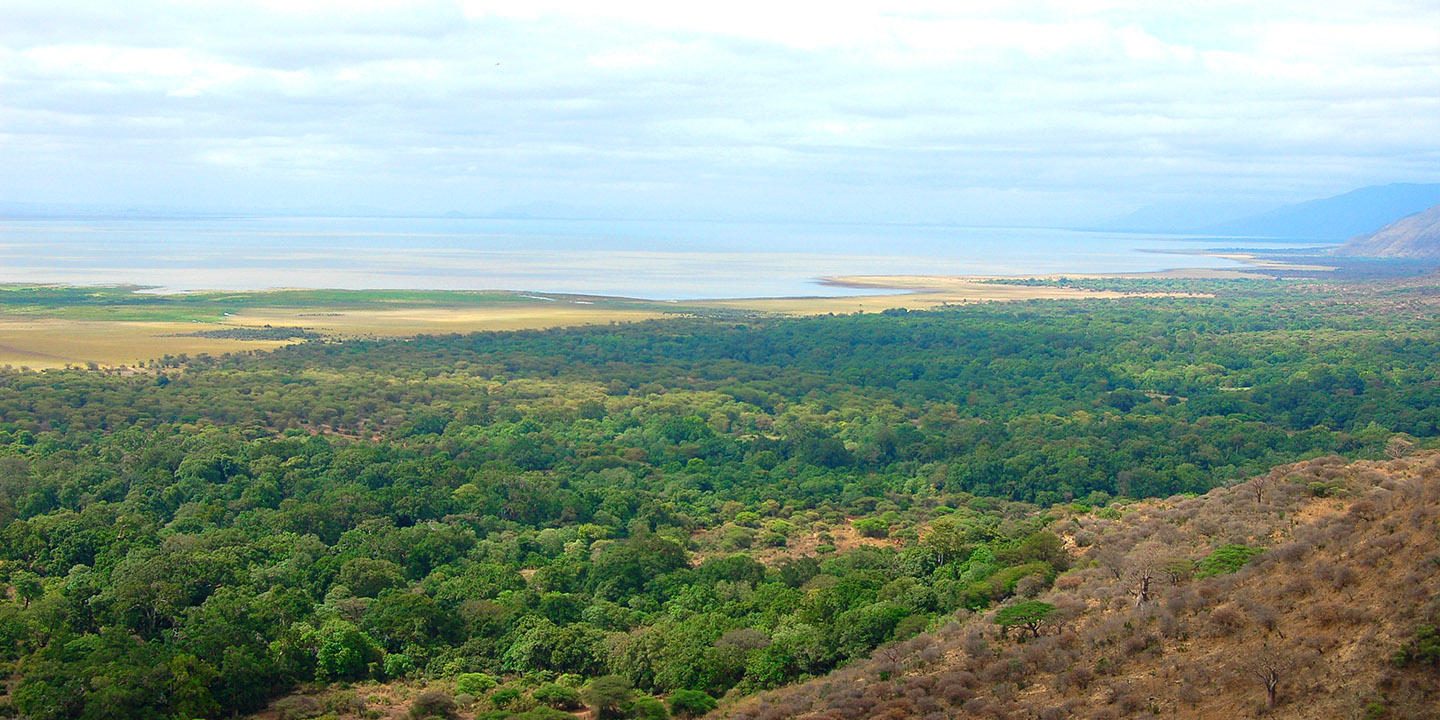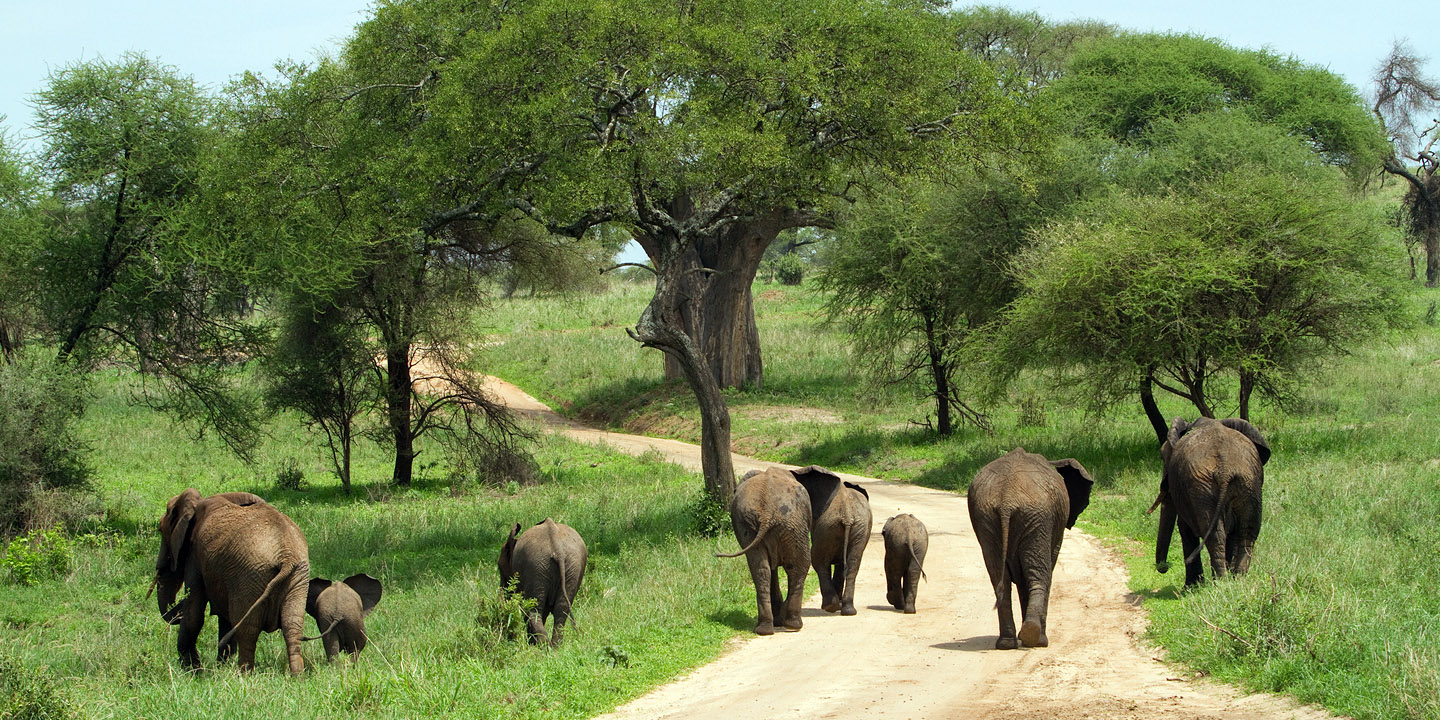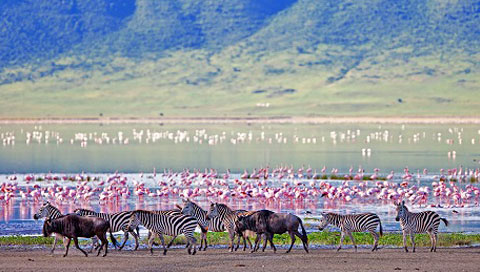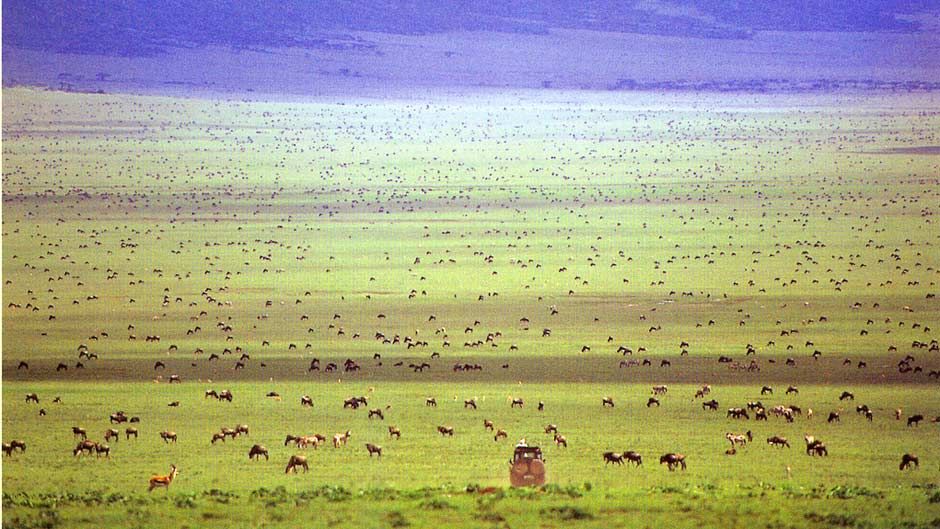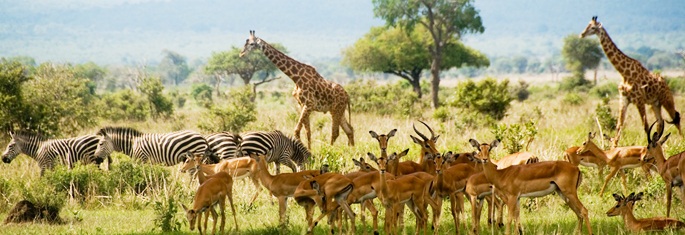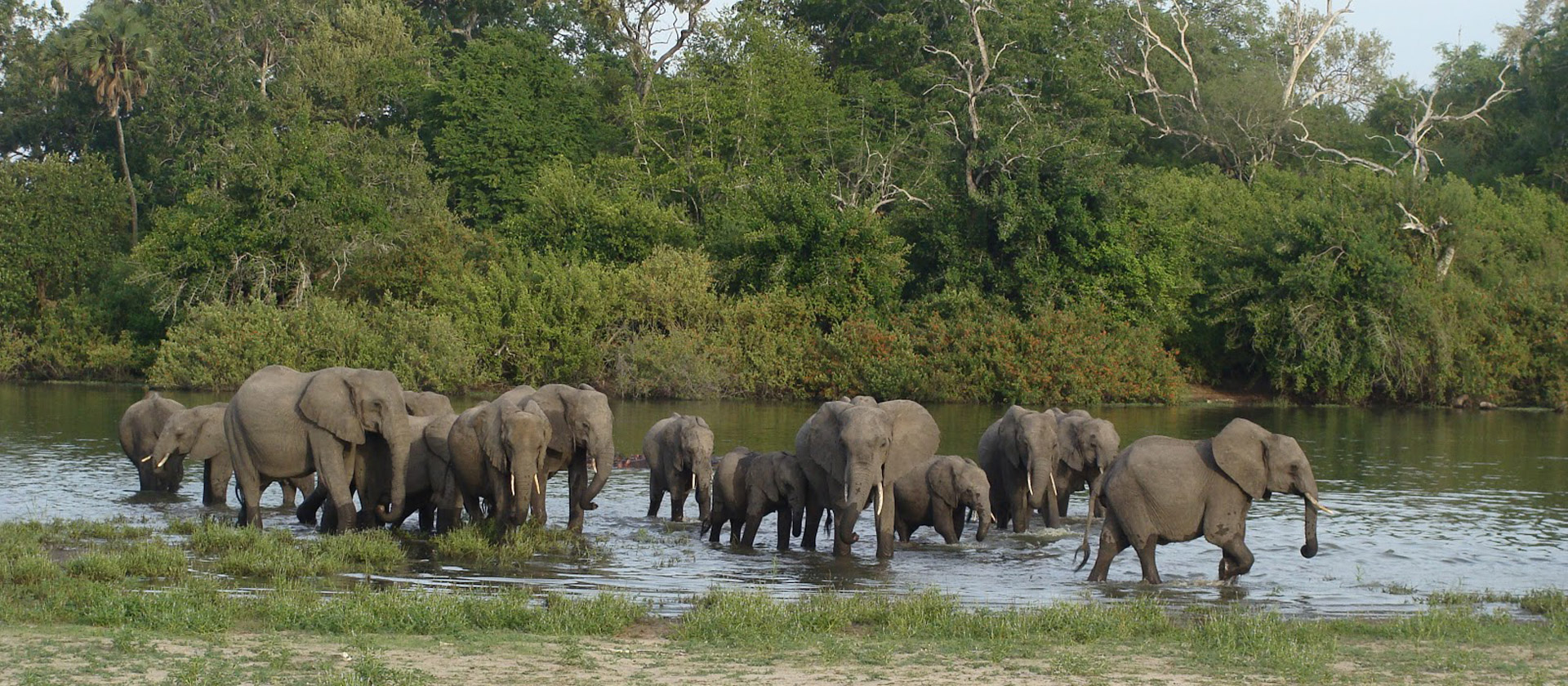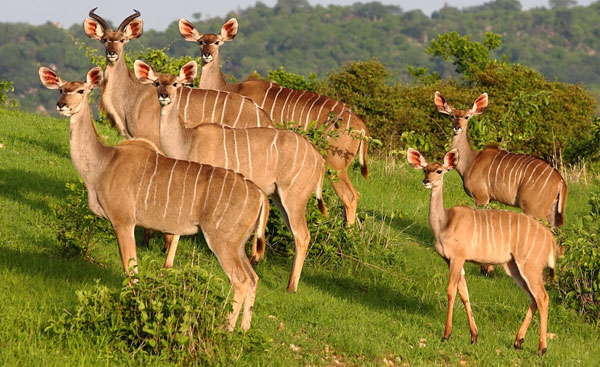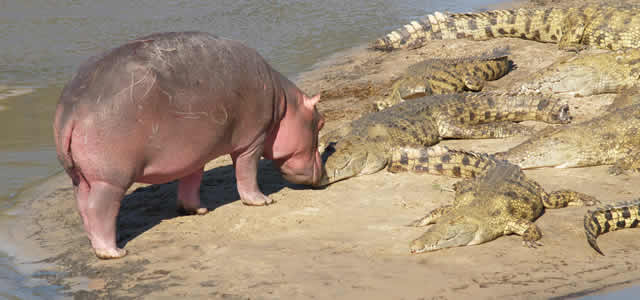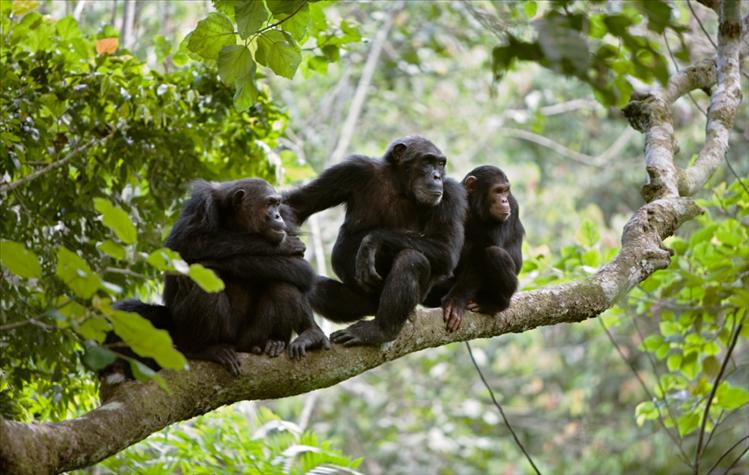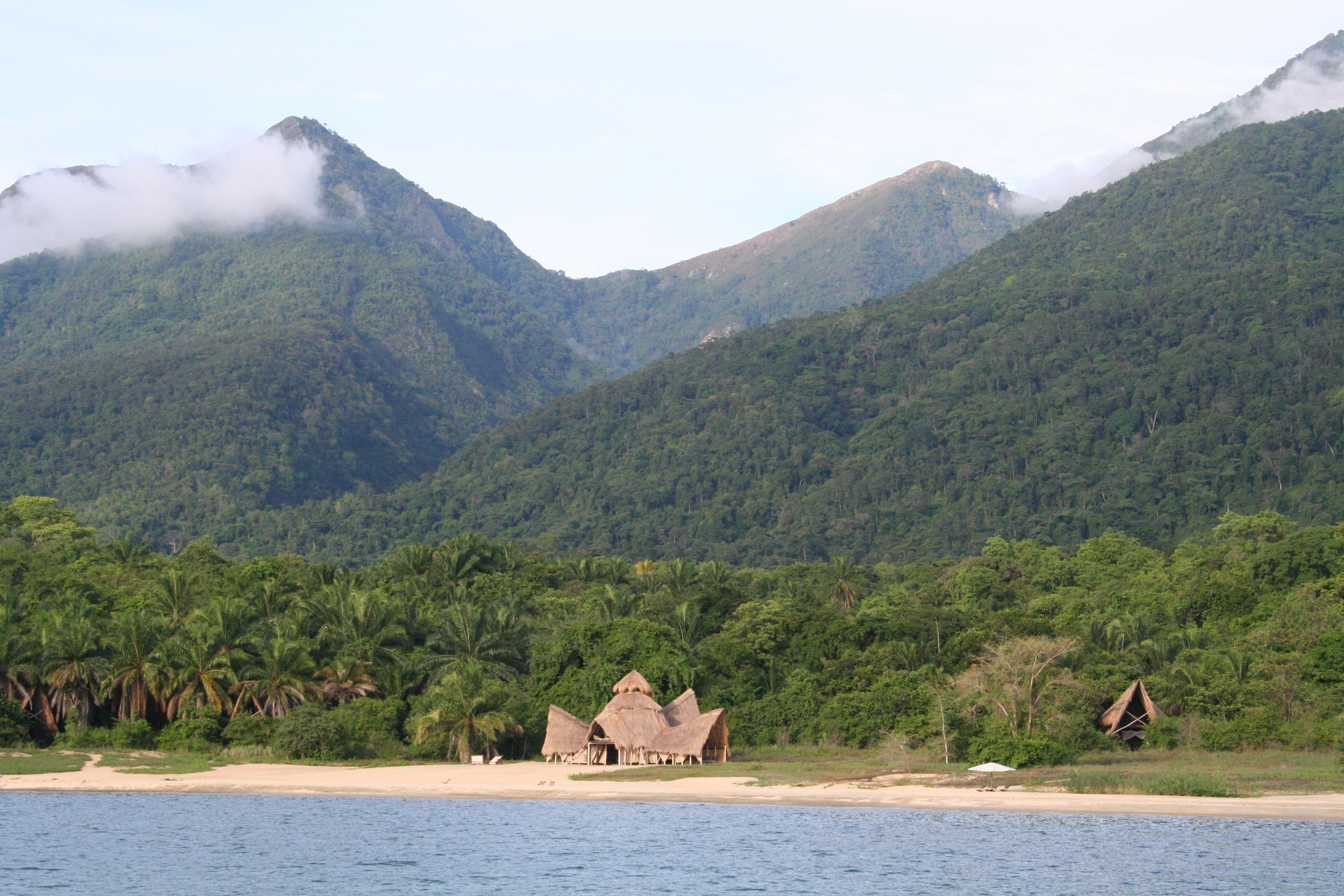Here are the Best Game parks and Reserves in Tanzania:
Lake Manyara National Park
The park consists of 330 km2 (130 sq mi) of arid land, forest, and a soda-lake which covers as much as 200 km2 of land during the wet season but is nearly non-existent during the dry season. The majority of the land area of the park is a narrow strip running between the Gregory Rift wall to the west and Lake Manyara, an alkaline or soda-lake, to the east.
Lake Manyara National Park is known for the flamingos that inhabit the lake. During the wet season they inhabit the edges of the lake in flocks of thousands but they are not so present during the dry season. More than 400 species of birds inhabit the park and many remain throughout the year. Because of this Lake Manyara National Park is a good spot for bird watching. Visitors to the park can expect to see upwards of 100 different species of bird on any day.
The park is also home to the African leopards, lions, cheetahs, African bush elephants, blue monkeys, dik-dik, Thomson’s gazelle, hippo, Masai giraffe, impala, Grant’s zebras among many others. This is the best park to see the famous tree-climbing lions while not hunting for prey.
Tarangire National Park
Tarangire National Park is the sixth largest national park in Tanzania after Ruaha, Serengeti, Mikumi, Katavi and Mkomazi. The name of the park originates from the Tarangire river that crosses through the park, being the only source of water for wild animals during dry seasons. During the dry season thousands of animals migrate to the Tarangire National Park from Manyara National Park.
Tarangire National Park covers an area of approximately 2,850 square kilometers (1,100 square miles.) The landscape and vegetation is incredibly diverse with a mix that is not found anywhere else in the northern safari circuit. The hilly landscape is dotted with vast numbers of Baobab trees, dense bush and high grasses.
The park is famous for its huge number of elephants, baobab trees and tree climbing lions. Visitors to the park can expect to see any number of resident zebra and wildebeest in addition to the less common animals. Other common animals include waterbuck, giraffe, and olive baboons.
Home to more than 550 species, the park is a haven for bird enthusiasts who can expect to see dozens of species even in the dry season. The swamps are the focus of the largest selection of breeding birds anywhere in the world. Yellow-collared lovebirds are a common bird sighting in the trees along the Tarangire River.
The park is also famous for the termite mounds that dot the landscape. Those that have been abandoned are often seen to be home to dwarf mongoose.
The Ngorongoro Crater
This is within the Ngorongoro conservation area – a UNESCO World Heritage Site located 180 km west of Arusha. Ngorongoro was named by the Masai as El-Nkoronkoro meaning Gift of Life.
The Ngorongoro Crater is the world’s largest inactive, intact, and unfilled volcanic caldera. The crater, which formed when a large volcano exploded and collapsed on itself two to three million years ago, is 610 metres (2,000 feet) deep and its floor covers 260 square kilometres (100 square miles). In February 2013, the Crater was voted by Seven Natural Wonders as one of the Seven Natural Wonders of Africa.
Approximately 25,000 large animals, mostly ungulates, live in the crater. Wildlife found here includes the black rhinoceros, the Cape buffalo, wildebeests, Grant’s zebra, the common eland, Grant’s and Thomson’s gazelles, Waterbucks among others. There are no topis, oribis or crocodiles. Impala are absent because the open woodland they prefer does not exist. Giraffe also are absent, possibly because of a lack of browse species. Tanzanian cheetah, East African wild dog and African leopard are rarely seen. Lake Magadi, a large lake in the southwest of the crater, is often inhabited by thousands of mainly lesser flamingoes.
Serengeti National Park
The Serengeti National Park covers 14,750 square kilometres (5,700 sq mi) of grassland plains, savanna, riverine forest, and woodlands and lies in northwestern Tanzania, bordered to the north by the Masai Mara National Reserve in Kenya. It is famous for its annual migration of over 1.5 million wildebeests and 250,000 zebra between this vast game park and the Masai Mara Game reserve which is about a tenth in comparison.
The park is Tanzania’s oldest national park and remains the flagship of the country’s tourism industry, providing a major draw to the Northern Safari Circuit encompassing Lake Manyara National Park, Tarangire National Park, Arusha National Park and the Ngorongoro Conservation Area. It has over 2,500 lions and more than 1 million wildebeest.
The Serengeti is believed to hold the largest population of lions in Africa due in part to the abundance of prey species. More than 3,000 lions live in this ecosystem. The park also supports many other species, including Thomson’s and Grant’s gazelle, topi, eland, waterbuck, spotted hyena, striped hyena, baboon, impala, East African wild dog, and Masai giraffe. The park also boasts about 500 bird species, including ostrich, secretary bird, kori bustard, crowned crane, marabou stork, martial eagle, lovebirds, and many species of vultures.
Mikumi National Park
The Mikumi National Park covers an area of 3230 km² and is the fourth largest in the country. It is bordered to the south with the Selous Game Reserve, the two areas forming a unique ecosystem. Two other natural areas bordering the national park are the Udzungwa Mountains and Uluguru Mountains.
The landscape of Mikumi is often compared to that of the Serengeti. The road that crosses the park divides it into two areas with partially distinct environments. The area north-west is characterized by the alluvial plain of the river basin Mkata. The vegetation of this area consists of savannah dotted with acacia, baobab, tamarinds, and some rare palm. The southeast part of the park is less rich in wildlife, and not very accessible.
The fauna includes lions, giraffe, African elephants, zebras, impala, eland, kudu, black antelope, baboons, wildebeests and buffaloes. More than 400 different species of birds also inhabit the park.
Selous Game Reserve
The Selous Game Reserve is one of the largest faunal reserves of the world, located in the south of Tanzania. It was named after Englishman Sir Frederick Selous, a famous big game hunter and early conservationist. The Selous was designated a UNESCO World Heritage Site in 1982 due to the diversity of its wildlife and undisturbed nature.
The reserve covers a total area of 54,600 km2 (21,100 sq mi) and has additional buffer zones. Within the reserve no permanent human habitation or permanent structures are permitted. Some of the typical animals of the savanna (for example elephants, hippopotami, African wild dog, cape buffalo and crocodiles) can be found in this park in larger numbers than in any other African game reserve or national park.
Interesting places in the park include the Rufiji River, which flows into the Indian Ocean opposite Mafia Island and the Stiegler Gorge, a canyon of 100 metres depth and 100 metres width. Habitats include grassland, typical Acacia savanna, wetlands and extensive Miombo woodlands. Although total wildlife populations are high, the reserve is large and densities of animals are lower than in the more regularly visited northern tourist circuit of Tanzania. Walking safaris are permitted in the Selous, and boat trips on the Rufiji are a popular activity.
Ruaha National Park
Ruaha National Park is the largest national park in Tanzania. The addition of the Usangu Game Reserve and other important wetlands to the park in 2008 increased its size to about 20,226 square kilometres. The park is a part of the 45,000 square kilometres (17,000 sq mi) Rungwa-Kizigo-Muhesi ecosystem, which includes Rungwa Game Reserve, Kizigo and Muhesi Game Reserves, the Mbomipa Wildlife Management Area, and several other protected areas.
The name of the park is derived from the Great Ruaha River, which flows along its southeastern margin and is the focus for game-viewing. The park can be reached by car on a dirt road or air to the two airstrips – Msembe airstrip at Msembe (park headquarters), and Jongomeru Airstrip, near the Jongomeru Ranger Post.
The park is noted for its large population of elephants, with about 10,000 roaming the park. More than 571 species of birds have been identified in the park. Among the resident species are hornbills, kingfishers, and sunbirds. Other noted animals are the African wild dog and the sable antelope. The best time to visit for predators and large mammals is during the dry season (May–December) and for birds and flowers, during the wet season (January–April).
Katavi National Park
This is a very remote park that is less frequently visited than other Tanzanian national parks. The park is approximately 4,471 square kilometers (1,726 sq mi) in area, which makes it the third largest national park in Tanzania. It encompasses the Katuma River and the seasonal Lake Katavi and Lake Chada flood-plains. Wildlife here include large animal herds, particularly of Cape Buffalo and elephant, plus along the Katuma river, crocodiles and hippos which upon annual dry seasons results in mud-holes that can be packed with hundreds of hippos.
Mahale Mountains National Park
This park lies on the shores of Lake Tanganyika in Kigoma Region, Tanzania. Named after the Mahale Mountains range that is within its borders, the park has several unusual characteristics. First, it is one of only two protected areas for chimpanzees in the country. (The other is nearby Gombe Stream National Park made famous by the researcher Jane Goodall.) The chimpanzee population in Mahale Mountains National Park is the largest known and due to its size and remoteness, the chimpanzees flourish. It is also the only place where chimpanzees and lions co-exist. Another unusual feature of the park is that it is one of the very few in Africa that must be experienced by foot. There are no roads or other infrastructure within the park boundaries, and the only way in and out of the park is via boat on the lake.
The Mahale mountains were traditionally inhabited by the Batongwe and Holoholo people, with populations in 1987 of 22,000 and 12,500 respectively. When the Mahale Mountains Wildlife Research Center was established in 1979 these people were expelled from the mountains to make way for the park, which opened in 1985. The people had been highly attuned to the natural environment, living with virtually no impact on the ecology.
See Also: 4 Days Best of Ngorongoro & Serengeti

